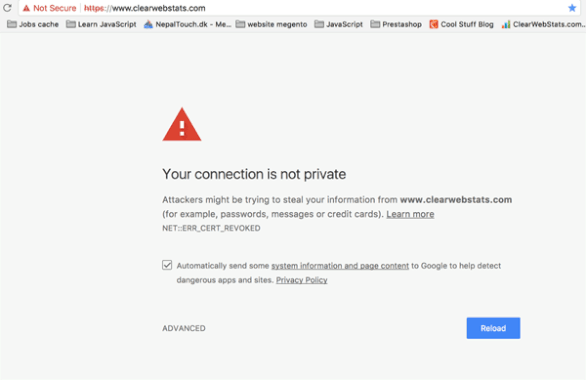

- #SSRS 2016 WILDCARD CERTIFICATE HOW TO#
- #SSRS 2016 WILDCARD CERTIFICATE INSTALL#
- #SSRS 2016 WILDCARD CERTIFICATE WINDOWS#
#SSRS 2016 WILDCARD CERTIFICATE INSTALL#
I’m happy to be report, however, that it works great and is easy to install with these instructions! That said, Comodo has a couple of “tested” certificates, but the Comodo PositiveSSL Wildcard is not one of them. Quick side note about FileMaker “tested” certificates: there has been a semantic change regarding FileMaker’s stance on certificates from “supported” certificates to “tested” certificates (heard this on FileMaker Talk podcast: Episode 136) which was intentional because before, developers felt like they could only use “supported” certificates. The one I found is called the Comodo PositiveSSL Wildcard (there are no affiliate links in this article). Wildcard certificates are more expensive than single domain certs, so after some research I found the cheapest wildcard SSLs at which is a reseller of the big name certificate companies. With that, let’s begin by acquiring the certificate!
#SSRS 2016 WILDCARD CERTIFICATE WINDOWS#
This allows us to point the url fm. directly to the FileMaker server in the cloud!).īefore we get into the details, I am going to assume you have already installed FileMaker Server on a Windows Server and can connect a FileMaker client successfully, and that you already have a registered domain name.
#SSRS 2016 WILDCARD CERTIFICATE HOW TO#
In other words, we can configure it so that not only is encrypted and validated, but so are and also fm. (later we will see how to apply this fm subdomain to the public IP associated with the Azure server. In order to validate all three of these separate entities, I decided to get a Wildcard SSL certificate which will validate an unlimited number of subdomains. The web site is hosted remotely at a hosting company with the domain but the apps are hosted on the same Azure server where we installed FileMaker Server. In my case, I wanted to encrypt parts of our company’s web site, our web apps, and also FileMaker Server! Each of these entities are related, but distinct. Not validating creates the possibility that a connection to the domain could be spoofed or in some way hacked by a third party!įortunately, these days there are some inexpensive options when purchasing certificates, so in a professional/production environment there is no reason not to get one. It might be worth it to note that the pre-installed FileMaker certificate and a custom certificate both encrypt the web connection between the end points, but the FileMaker issued certificate never validated the domain owner. A custom SSL certificate is required for production use. The FileMaker default SSL certificate is intended only for test purposes. The FileMaker Server documentation states:įileMaker Server provides a standard SSL certificate signed by FileMaker, Inc. This second reason is the key difference between FileMaker’s built in certificate and one issued through a Certificate Authority. In other words, domain owners must go through a process to prove they own that domain before they are issued a certificate from a Certificate Authority. The main functions of an SSL certificate are to 1) encrypt the data traveling over the web and 2) verify to end users that the web domain they are connecting to belongs to the owner’s of that domain. The end point could be a web page, mobile app, FileMaker client, etc. SSL certificates are currently the accepted method for encrypting web traffic between a server and an end point. Let’s begin!įor those who are new to SSL or need a refresher, let’s start by defining some of the basic concepts, terms, and reasons behind SSL (if you just want to get to the steps, scroll down a little further). As mentioned, if your server is in-house this article still applies to you, but you can skip the Azure specific stuff. The certificate will be installed on both FileMaker Server and Windows Server in order to enable encrypted connections directly to FileMaker Server and also to web pages hosted on Windows Server! I will focus on using a Wildcard SSL certificate, but the same process can be used for installing a single domain certificate. This article is intended to be a deep dive, step by step, “how to” article walking through the process of setting up a Wildcard SSL certificate in FileMaker server and Windows server in the Azure cloud (if your Windows Server is not in the Azure cloud, most of this article will still apply and be useful). Why: Security is a priority with any solution, but especially if you connect to your server over a WAN (as opposed to your local network).With: FileMaker 16+ (these instructions will likely work with past versions as well).What: How to Install a Wildcard SSL on Windows Server in Azure.



 0 kommentar(er)
0 kommentar(er)
